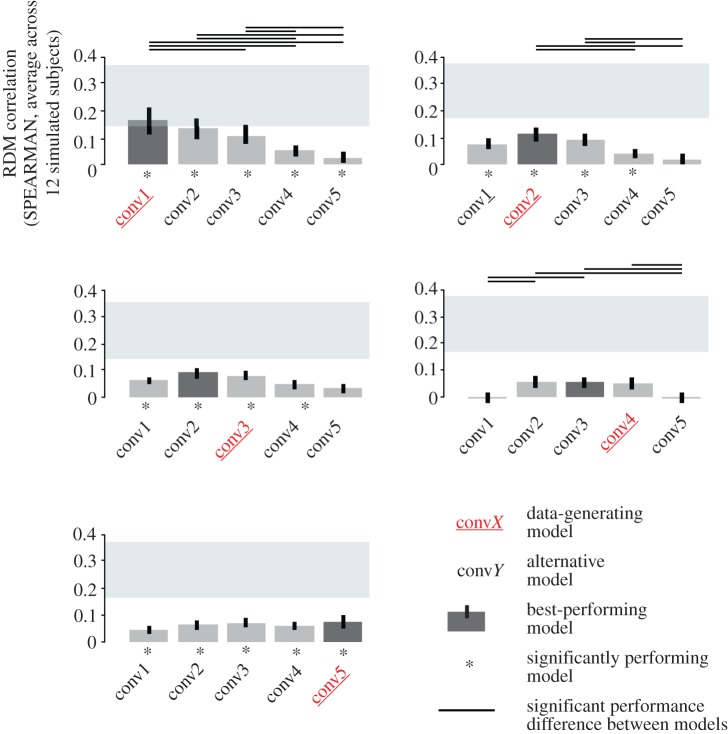Figure 4.
Classical RSA without modelling of the measurement process can fail to identify the data-generating BCM when measurements distort the representational geometry. Frequentist RSA without a measurement model performed for simulated fMRI data from different layers of AlexNet. Voxels were simulated as local averages. Because the local averaging by the voxels is not accounted for in the analysis, the ground-truth data-generating model (red text label) does not reach the noise ceiling (grey bar) for BCMs conv2–conv5. For two of five ground-truth BCMs (conv3 or conv4), the true model is not the best-performing model. Group analysis for 12 simulated subjects. Stars indicate significant RDM correlations. Grey rectangles are noise ceilings, whose upper and lower edges indicate upper and lower bounds on the performance expected for the unknown true model given the noise in the data and the inter-subject variability. Black lines above the noise ceilings indicate significant differences between models (subject-as-random-effect signed-rank tests, FDR < 0.05). Note the substantial noise reflected in the low noise ceiling, approximately matching expectations for a small fMRI study. The same simulated dataset was analysed with the proposed pRSA method without and with an MM in figures 7 and 9.

